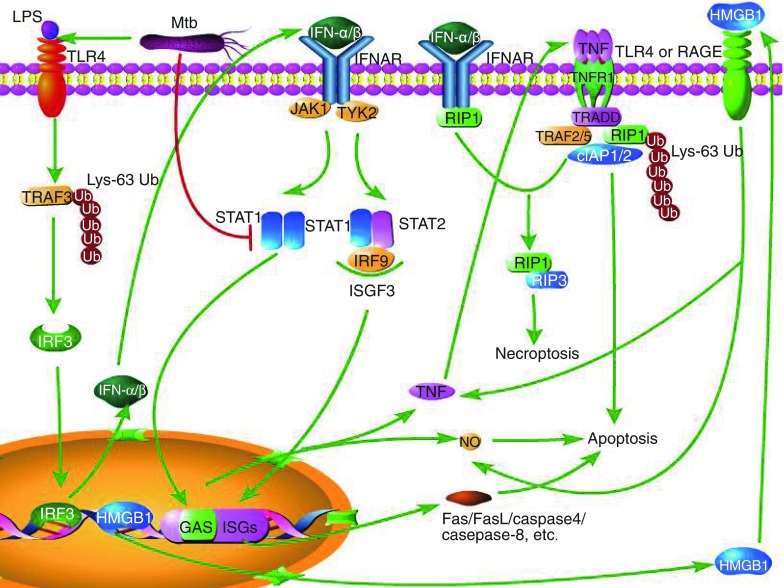Figure 2.
Apoptosis and necroptosis induced by IFN-α/β. Recognition of LPS from Mtb by TLR4 leads to Lys-63-linked polyubiquitination of TRAF3 (TNF receptor‑associated factor 3), which activates IRF3 (IFN regulatory factor 3). The activated IRF3 enters into nucleus and targets DNA, leading to the expression of IFN-α/β. IFN-α/β then binds to IFN-α/β receptor (IFNR), which activate JAK1 (Janus kinase 1) and TYK2 (non‑receptor tyrosine kinase 2). The activation of JAK1 and TYR2 can result in homodimerization of STAT1 and formation of ISGF3. STAT1 homodimers bind to GAS enhancer elements in the promoters of ISGs, which result in the production of pro-inflammatory factors such as TNF and NO, both of which are inducers of apoptosis. ISGF3 migrates to the nucleus to bind to ISGs, leading to the production of apoptosis-related factors. INF-α/β also can mediate necroptosis by inducing interaction of TNFR1 and RIP1, which promotes formation of RIP1-RIP3 and release of HMGB1 from nucleus to outside of the cell. The extracellular HMGB1 binds to TLR4 or RAGE (the receptor for advanced glycation end products) to increase the levels of TNF and NO

